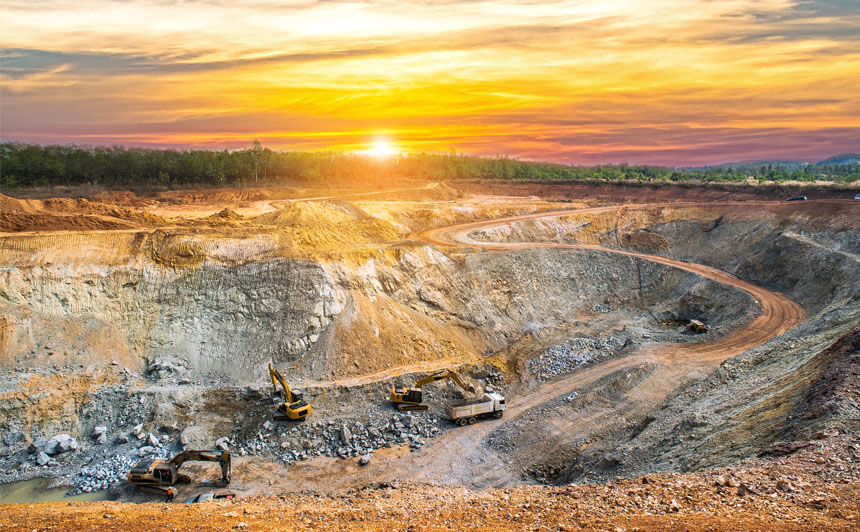Our global mining practice reached out to more than 60 top executives worldwide to get their perspectives on trends and issues affecting leadership in mining. What we learned is that the mining sector is going through a seismic shift.
From reputational and cultural challenges to a shrinking talent pool, a resistance to embracing new technology and a lack of diversity, the industry is primed for change and growth coming out of the pandemic. Not surprisingly, an important part of this evolution involves improving the sector's ability to attract and retain top talent with the expertise required to lead in today's fast-paced, ever-changing environment.
Addressing reputation issues & a shrinking talent pool
According to the Mining Industry Human Resources Council, almost half of the current mining industry workforce is over 45 and, over the next decade, 60,000 workers are expected to retire. This, combined with fewer students enrolling in mining, metallurgy and geotechnical engineering programs, is making it difficult to compete for top talent.
According to survey respondents, younger generations are less and less interested in mining. This includes many millennials ― or potential future mining leaders ― who hold strong, unfavourable opinions on how the industry has addressed environmental, social, and corporate governance (ESG) issues. And with women only making up 15.7% of employees in mining companies, lack of diversity and an inclusive culture also continues to be a significant challenge when competing for talent.
While there are no immediate ‘quick fix’ solutions to address these issues, several executives emphasized the importance of repositioning the mining career path with a more compelling narrative. But before companies can tell a new story, leaders must start shaping changes in the organizational culture.
As a talent attraction tactic, some mining companies are focused on developing a stronger ESG strategy. Additionally, the role of the CHRO has gained importance as the alignment of culture, people and process has become a critical priority. Others are actively recruiting leaders from outside the industry to improve their bench strength — bringing new perspectives and skillsets to their leadership team.
Investing in talent planning & retention
Of course, attracting great talent is only half the battle — retaining them is equally vital for any organization's long-term success. The executives we spoke with identified slow career progression and a lack of growth opportunities, coupled with an overall lack of succession planning as barriers to the retention and development of high-potential leaders in the industry.
While fewer growth opportunities for younger talent stems partially from many leaders working to and beyond retirement, a lack of strategic talent planning and development programs is also slowing talent progression. Some organizations we interviewed are working to address this by investing in leadership development programs or providing stretch assignments to build expertise and leadership potential. Others are going as far as creating new roles that will help their future leaders develop and stay engaged with their business and their brand.
Of course, the remote nature of on-site work and historical resistance to embracing new technologies hasn't helped either. To overcome this challenge, forward-thinking mining companies are already shifting to automate more on-site operations and adopt digital communication platforms, both of which open up the potential to draw leaders from a broader global talent pool.
Leading through change
A critical part of talent planning for the future requires a deep understanding of what kind of leader will be equipped to face the ongoing change and transformation taking place within the industry. That’s why a focus on developing more well-rounded leaders will be key ― leaders who have both the technical understanding and the necessary soft skills to build the kind of culture that attracts and retains top talent.
In the mining context, leaders need to be able to see the future and connect the dots from a ‘systems thinking’ perspective. It also means that leaders must establish organizational values that are built into the culture and fostered across the organization, including at the board level, given the increasing focus on ESG and diversity, equity and inclusion.
So, what are the steps that mining organizations can take right now to plan for the future?
- Map their talent plans to their strategic plan: An organization’s talent plan should be driven by their business strategy, a clear understanding of the trends that will impact the business and their organizational structure and talent needs. It’s critical to regularly review current leadership against these needs.
- Focus on building a culture that attracts and retains top talent: Top candidates are looking for organizations that are technologically advanced, inclusive and committed to modern ESG practices. Demonstrating these best practices requires a clear vision, purpose and values that are being lived inside and outside the organization.
- Invest in the next generation of leaders: Organizations need a structured process to identify and assess the next generation of leaders who can quickly step up into new roles. Then, they need to develop them through stretch assignments, newly created roles, and leadership development support including coaching and mentoring.
Top talent trends that will shape the global mining industry in 2021
Our global mining practice reached out to top executives in the mining sector to get their perspectives on trends and issues affecting leadership in mining.
Download the report nowHow We Help: The Odgers Berndtson Mining Practice
We support our mining clients in making the most important talent decisions. As a leading global executive search and leadership advisory firm, we specialize in recruiting, assessing and developing senior executives, operational leaders and board members from our offices in mining hubs such as Johannesburg, London, Melbourne, Toronto and 24 other countries worldwide.
To learn more about our report or how we can help you navigate your talent challenges, please contact us here.




